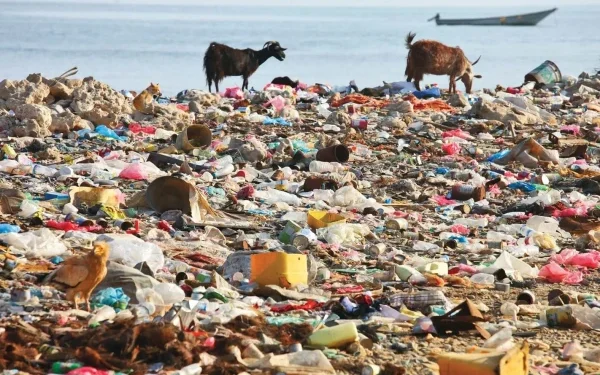In a disturbing trend, recent studies and global health reports have raised red flags over the increasing incidence of cancer among young people worldwide. Among the primary culprits identified are environmental pollution, excessive exposure to plastic-related chemicals, and unhealthy dietary habits. These risk factors, once considered secondary, are now emerging as significant contributors to cancer development in adolescents and young adults (AYAs).
Experts from the World Health Organization (WHO), International Agency for Research on Cancer (IARC), and leading oncologists from around the world are calling for urgent policy changes, greater public awareness, and more stringent environmental regulations to reverse this dangerous trajectory.
Understanding the Crisis: Why Are More Young People Getting Cancer?
Historically, cancer has been more prevalent among older populations. However, in the last two decades, a worrying shift has been observed. Young people — including teenagers and adults under the age of 40 — are increasingly being diagnosed with aggressive forms of cancer, such as:
- Breast cancer
- Blood cancers like leukemia
- Prostate cancer
- Colorectal cancer
- Lymphomas and sarcomas
This trend is not limited to any one region. Countries in Asia, North America, and Europe are reporting year-on-year increases in cancer rates among youth, prompting researchers to examine non-genetic, environmental, and lifestyle-related causes.
1. Pollution: A Silent Yet Potent Carcinogen
Air Pollution and Cancer Risk
Among the most significant environmental threats is air pollution, particularly from vehicles, industrial emissions, and urban smog. Tiny airborne particles known as PM2.5 (particulate matter smaller than 2.5 microns) penetrate deep into the lungs and bloodstream when inhaled.
These particles carry toxic substances, such as:
- Benzene
- Heavy metals
- Polycyclic aromatic hydrocarbons (PAHs)
- Volatile organic compounds (VOCs)
Long-term exposure to these pollutants causes chronic inflammation, damages DNA, and disrupts cellular function — conditions that are known to trigger mutations and lead to various cancers.
“What’s concerning is that young people today are breathing in more toxic air than any previous generation,” says Dr. Amina Gul, an environmental oncologist based in Islamabad.
Water and Soil Contamination
Pollution is not confined to the air. Contaminated water sources — often polluted with industrial waste, pesticides, and sewage — have also been linked to cancer in children and teens. Heavy metals like arsenic, lead, and cadmium, commonly found in polluted soil and groundwater, have been associated with cancers of the liver, bladder, and skin.
Children and teenagers are particularly vulnerable as their organs and immune systems are still developing, making it harder for their bodies to detoxify harmful substances.
2. Increasing Exposure to Plastics: A Hormonal Time Bomb
Plastics and Endocrine Disruptors
Plastics are everywhere — in food packaging, water bottles, toys, cosmetics, and even clothing. But hidden within many plastic products are endocrine-disrupting chemicals (EDCs) such as:
- Phthalates
- Bisphenol A (BPA)
- Polybrominated diphenyl ethers (PBDEs)
These chemicals mimic hormones in the body, particularly estrogen, and interfere with the natural endocrine system. Long-term exposure to these substances has been linked to:
- Early puberty
- Reduced fertility
- Hormonal cancers such as breast and prostate cancer
Pathways of Exposure in Youth
Young people are especially at risk because of:
- Frequent use of plastic food containers, especially when heated in microwaves
- Consumption of bottled water stored in hot environments
- Use of personal care products with synthetic fragrances and plastic-derived ingredients
Studies have shown that even low-level, chronic exposure to these substances can cause cell mutations, increase oxidative stress, and lead to the development of tumors.
3. Unhealthy Diet and Lifestyle: Fuel for Inflammation and Obesity
The Rise of Processed Foods
Modern diets have shifted dramatically, especially among urban youth. Fast food, sugar-laden beverages, refined carbohydrates, and high-fat processed snacks now dominate daily meals. These foods are often rich in:
- Preservatives
- Artificial colors and flavors
- Trans fats and high fructose corn syrup
Such dietary patterns promote systemic inflammation — a condition in which the body remains in a constant low-grade inflammatory state. Chronic inflammation has been directly linked to the development and progression of cancer, particularly in the gastrointestinal tract and liver.
Low Fiber and Gut Health
Diets lacking in fiber-rich vegetables, fruits, and whole grains negatively impact gut health. A weakened gut microbiome not only compromises immunity but also increases vulnerability to colorectal and stomach cancers.
Obesity as a Major Risk Factor
Obesity, which is rapidly rising among children and teens globally, significantly elevates the risk of developing at least 13 different types of cancer, including:
- Endometrial cancer
- Pancreatic cancer
- Liver cancer
- Kidney cancer
Fat tissue produces excess estrogen and inflammatory markers, both of which have been shown to promote tumor growth.
“Obesity is no longer just a metabolic concern — it is a cancer risk factor, particularly for youth who are overweight from an early age,” says Dr. Hassan Raza, a clinical nutritionist in Lahore.
Compounding Effects: A Dangerous Combination
What makes this crisis even more urgent is the cumulative effect of these risk factors. A teenager who:
- Grows up in a polluted city
- Eats highly processed, low-nutrient food
- Drinks water from plastic bottles daily
- Has limited physical activity and excess screen time
…is essentially exposed to a perfect storm of carcinogenic influences. The impact may not be immediate, but over time, these factors can cause:
- DNA damage
- Cellular dysfunction
- Hormonal imbalance
- Increased oxidative stress
These conditions lay the biological foundation for cancer, even in young, otherwise healthy individuals.
Global Response and Recommendations
Leading health organizations are now advocating for multi-sectoral action to address the rise of cancer among youth. Key recommendations include:
1. Environmental Reforms
- Tightening regulations on air and water pollution
- Implementing clean energy policies
- Improving waste management and reducing plastic production
2. Public Health Campaigns
- Educating parents and youth about harmful plastic chemicals
- Promoting the use of glass, metal, or BPA-free containers
- Warning against reheating food in plastic
3. Dietary and Lifestyle Changes
- Encouraging whole-food, plant-based diets rich in antioxidants and fiber
- Reducing consumption of sugary and ultra-processed foods
- Promoting physical activity and maintaining a healthy body weight
4. Early Detection and Screening
- Investing in early cancer screening programs for youth
- Training doctors to recognize early warning signs of cancer in adolescents
Conclusion: Urgent Need for Awareness and Action
The rising incidence of cancer in young people is not merely a statistical anomaly — it is a reflection of the modern lifestyle’s toxic footprint. From the air we breathe to the food we consume and the materials we touch daily, numerous environmental and lifestyle factors are silently compromising youth health.
While genetics still play a role in cancer risk, mounting evidence suggests that modifiable factors — pollution, plastics, and diet — are equally important in cancer prevention.
Governments, industries, schools, and families must work together to create a safer, healthier environment for future generations. The time to act is now — because protecting our youth today means protecting the nation’s health tomorrow.

























